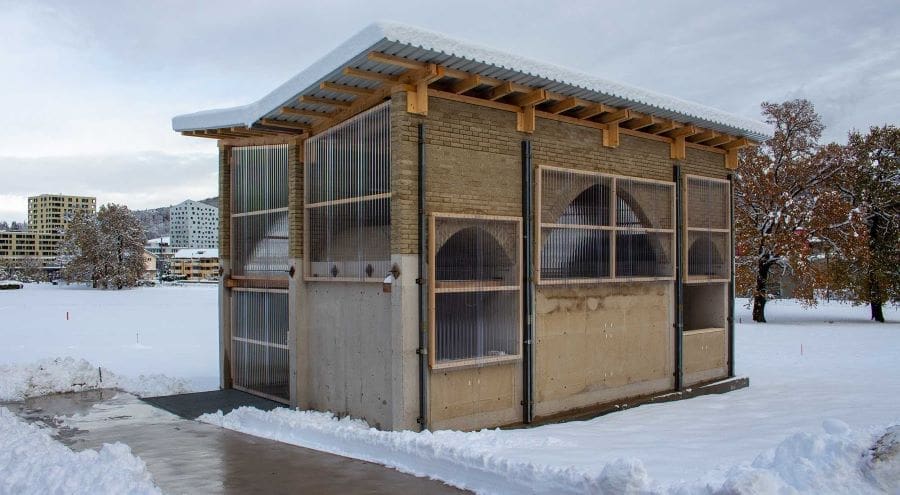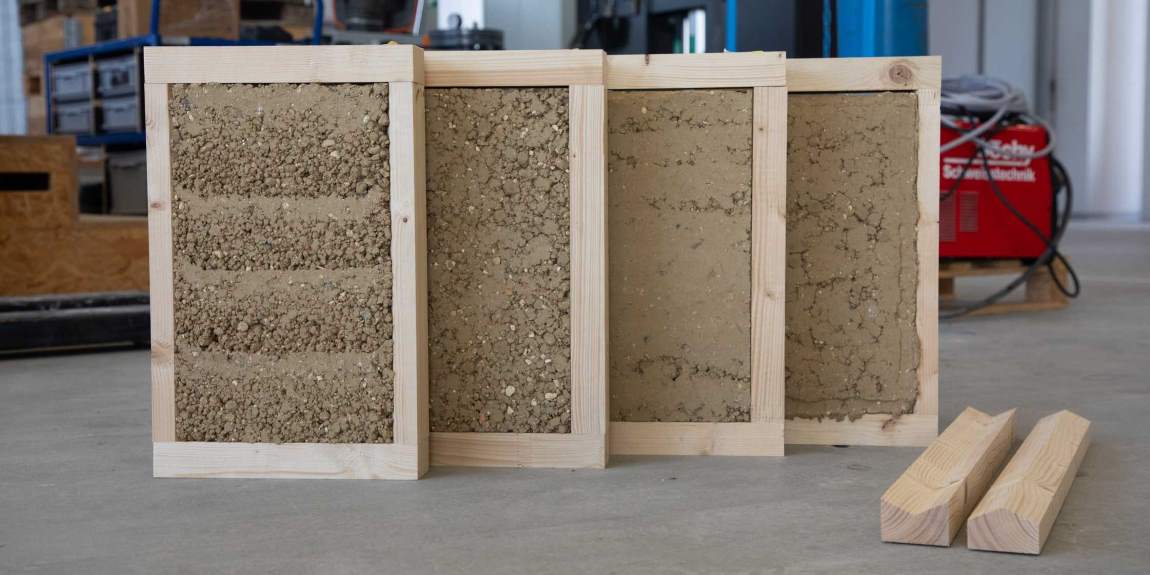Two flagship projects spearheaded by ETH Zurich, funded by Innosuisse, aim to revolutionize the Swiss construction industry with sustainable practices. These initiatives, Swircular and Think Earth, tackle climate and resource challenges by focusing on circular and regenerative construction methods, respectively.
The construction sector in Switzerland accounts for 70% of domestic material consumption, 80% of waste – primarily from demolition and new builds – and approximately 24% of the country’s greenhouse gas emissions. Addressing these concerns, Swircular and Think Earth seek to integrate innovative materials, digital tools, and systemic changes over their five-year duration, beginning in 2024.

Think Earth: Regenerative construction with timber and earth
Think Earth focuses on leveraging timber and earth, two of humanity’s oldest and most sustainable building materials, to create regenerative construction methods. “It’s about using materials and methods that protect the environment and at the same time contribute to its restoration,” said Andrea Frangi, project head and Professor of Timber Structures at ETH Zurich. These materials are celebrated for their carbon storage capabilities, reusability, and properties like thermal insulation and fire resistance.
The project’s initial success is exemplified by the Manal Pavilion, constructed from earth-based materials, timber, and recycled concrete. This prototype, located on the Lucerne University of Applied Sciences and Arts campus, demonstrates the synergy between regenerative construction and circular economy principles.
The project brings together 51 industry partners and researchers from ETH Zurich, EMPA, Lucerne University of Applied Sciences and Arts, and other Swiss institutions. It encompasses ten sub-projects ranging from material science to developing building codes that facilitate practical applications.
Swircular: A digital ecosystem for circular construction
Led by Professor Catherine De Wolf, Swircular addresses barriers to circular construction – notably, fragmented information about building materials and the lack of processes for resource reuse. De Wolf emphasizes digitalization as the key to overcoming these hurdles: “Our vision is a network of stakeholders, digital tools, and reliable data that makes it possible to track materials throughout their life cycle and exchange relevant information.”
Swircular’s approach includes digital building inventories, product passports for materials, and models for circular construction management. Collaborating with 24 partners across the Swiss construction value chain, the project aims to establish a comprehensive framework for sustainable building practices. Legal and economic frameworks and demonstrative applications are also integral to this effort.
Systemic change for a net-zero future
These projects align with Innosuisse’s mission to drive systemic innovations addressing critical economic and social challenges. The 2023 call for proposals prioritized “disruptive solutions for the transition to a net-zero world.” By championing collaborative efforts between academia and industry, Swircular and Think Earth exemplify transformative pathways toward a climate-neutral and resource-efficient construction sector.
Article Source:
Press Release/Material by ETH Zurich
Featured image: Hybrid building elements made from the reusable materials timber and earth can be used as interior and exterior walls as well as floor slabs, instead of concrete and steel. Credit: Pallavi Keshri and Linus Schmitz | ETH Zurich




